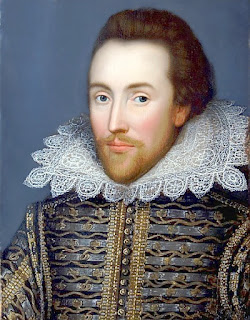Challenging Gender Norms on the Shakespearean Stage: Analyzing Cross-Dressing and Disguise
Introduction
 |
| William Shakespeare |
Gender Performance in Shakespearean Theater
Shakespeare's plays are replete with instances where characters engage in cross-dressing and disguise. Perhaps the most renowned example is found in "Twelfth Night," where Viola disguises herself as Cesario, a young man. This act of gender bending not only creates a comedic premise but also allows Shakespeare to explore the fluidity of gender identity. Viola's disguise challenges the traditional binary understanding of gender, prompting the audience to question the rigid constructs imposed by society.
Similarly, in "As You Like It," Rosalind adopts the guise of a young man named Ganymede. By doing so, she gains the freedom to navigate the world and interact with others in ways that would have been restricted to her as a woman. This subversion of societal expectations highlights the performative nature of gender and emphasizes the influence of external factors on the construction of identity.
Critical Overview of Critics
Scholars and critics have long been fascinated by the use of cross-dressing and disguise in Shakespearean theater. For instance, Judith Butler, a prominent gender theorist, argues that gender is performative and constantly constructed through repeated acts. Shakespeare's characters, through their cross-dressing and disguise, challenge the notion of an inherent and fixed gender identity, emphasizing the fluidity of gender.
Furthermore, Jean E. Howard, a renowned Shakespearean critic, suggests that cross-dressing serves as a means of destabilizing traditional gender roles. The act of donning a different gender challenges societal norms and exposes the arbitrary nature of gender expectations. Shakespeare uses this device to critique the limitations imposed on individuals based on their assigned gender, encouraging us to question and resist the confines of such rigid categorizations.
Examples from English Literature Texts
By examining the characters' experiences of cross-dressing and disguise, we gain a deeper understanding of the performative nature of gender. Shakespeare's works remind us that gender is not a fixed attribute but rather a social construct influenced by societal expectations and norms. Through his plays, he challenges us to recognize the fluidity of gender and encourages us to break free from the confines of prescribed roles.
Moreover, the exploration of gender performance in Shakespearean theater allows us to critically assess our own biases and prejudices. It prompts us to reflect on the ways in which we perceive and interact with others based on their gender. By challenging the binary understanding of gender, these plays open up space for inclusivity, acceptance, and respect for diverse identities.
Conclusion
In conclusion, Shakespeare's use of cross-dressing and disguise in his plays challenges societal norms and provides a platform for exploring the fluidity of gender roles. Through characters like Viola and Rosalind, he prompts audiences to question the limitations imposed upon individuals based on their assigned gender. The critical overview of scholars further illuminates the rich tapestry of interpretations surrounding gender performance in Shakespearean theater. Ultimately, the power of Shakespeare's works lies in their ability to transcend time and speak to the universal human experience, inviting us to reflect on the intricacies of gender identity and the performative nature of society.
References
1. Gender trouble : feminism and the subversion of identity : Butler, Judith : Free Download, Borrow, and Streaming : Internet Archive. (n.d.). Internet Archive. https://archive.org/details/gendertroublefem0000butl
2. Shakespeare’s art of orchestration : stage technique and audience response : Howard, Jean E. (Jean Elizabeth), 1948- : Free Download, Borrow, and Streaming : Internet Archive. (n.d.). Internet Archive. https://archive.org/details/shakespearesarto00howa


Comments
Post a Comment
Drop any query, suggestion or comment here.